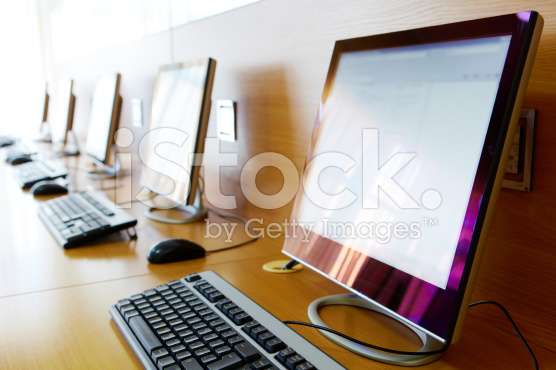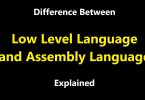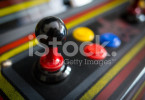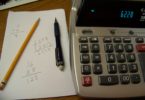What is the Difference Between Personal Computers and Mobile Devices
Summary: Difference Between Personal Computers and Mobile Devices is that a personal computer is a computer that can perform all of its input, processing, output, and storage activities by itself. A mobile computer is a personal computer you can carry from place to place. Similarly, a mobile device is a computing device small enough to hold in your hand. But find the explained Difference Between Personal Computers and Mobile Devices by reading below article.

Personal Computers
A personal computer is a computer that can perform all of its input, processing, output, and storage activities by itself. A personal computer contains a processor, memory, and one or more input, output, and storage devices. Personal computers also often contain a communications device. Two popular architectures of personal computers are the PC and the Apple. The term, PC-compatible, refers to any personal computer based on the original IBM personal computer design. Companies such as Dell and Toshiba sell PC-compatible computers. PC and PC-compatible computers usually use a Windows operating system. Apple computers usually use a Macintosh operating system (Mac OS). Two types of personal computers are desktop computers and notebook computers.
Desktop Computers
A desktop computer is designed so that the system unit, input devices, output devices, and any other devices fit entirely on or under a desk or table. In some models, the monitor sits on top of the system unit, which is placed on the desk. The more popular style of system unit is the tall and narrow tower, which can sit on the floor vertically.
Mobile Computers and Mobile Devices
A mobile computer is a personal computer you can carry from place to place. Similarly, a mobile device is a computing device small enough to hold in your hand. The most popular type of mobile computer is the notebook computer.
Notebook Computers
A notebook computer, also called a laptop computer, is a portable, personal computer often designed to fit on your lap. Notebook computers are thin and lightweight, yet can be as powerful as the average desktop computer. A netbook, which is a type of notebook computer, is smaller, lighter, and often not as powerful as a traditional notebook computer. Most netbooks cost less than traditional notebook computers, usually only a few hundred dollars.
Some notebook computers have touch screens, allowing you to interact with the device by touching the screen, usually with the tip of a finger. On a typical notebook computer, the keyboard is on top of the system unit, and the display attaches to the system unit with hinges. These computers weigh on average from 2.5 to more than 10 pounds (depending on configuration), which allows users easily to transport the computers from place to place. Most notebook computers can operate on batteries or a power supply or both.
Tablet PCs
Resembling a letter-sized slate, the Tablet PC, or tablet computer, is a special type of notebook computer you can interact with by touching the screen with your finger or a digital pen. One design of Tablet PC, called a convertible tablet, has an attached keyboard. Another design, which does not include a keyboard, is called a slate tablet and provides other means for typing. Tablet PCs are useful especially for taking notes in locations where the standard notebook computer is not practical.
Mobile Devices
Mobile devices, which are small enough to carry in a pocket, usually store programs and data permanently on memory inside the system unit or on small storage media such as memory cards. You often can connect a mobile device to a personal computer to exchange information. Some mobile devices are Internet-enabled, meaning they can connect to the Internet wirelessly. Because of their reduced size, the screens on handheld computers are small.
Popular types of mobile devices are smart phones and PDAs, e-book readers, handheld computers, portable media players, and digital cameras.
Smart Phones and PDAs
Offering the convenience of one-handed operation, a smart phone is an Internet-enabled phone that usually also provides personal information management functions such as a calendar, an appointment book, an address book, a calculator, and a notepad. In addition to basic phone capabilities, a smart phone allows you to send and receive e-mail messages and access the Web — usually for an additional fee. Many models also function as a portable media player and include built-in digital cameras so that you can share photos or videos. Many smart phones also offer a variety of application software such as word processing, spreadsheet, and games.
Many smart phones have keypads that contain both numbers and letters so that you can use the same keypad to dial phone numbers and enter messages. Others have a built-in mini keyboard. Some have touch screens, and some include a stylus. Instead of calling someone’s smart phone or cell phone, users often send messages to others by pressing buttons on their phone’s keypad, keys on the mini keyboard, or images on an on-screen keyboard. Types of messages users send with smart phones include text messages, instant messages, picture messages, and video messages.
- A text message is a short note, typically fewer than 300 characters, sent to or from a smart phone or other mobile device.
- An instant message is a real-time Internet communication, where you exchange messages with other connected users.
- A picture message is a photo or other image, sometimes along with sound and text, sent to or from a smart phone or other mobile device. A phone that can send picture messages often is called a camera phone.
- A video message is a short video clip, usually about 30 seconds, sent to or from a smart phone or other mobile device. A phone that can send video messages often is called a video phone.
A PDA (personal digital assistant), which often looks like a smart phone, p rovides personal information management functions such as a calendar, an appointment book, an address book, a calculator, and a notepad. A PDA differs from a smart phone in that it usually does not provide phone capabilities and may not be Internet-enabled, support voice input, have a built-in camera, or f unction as a portable media player.
E-Book Readers
An e-book reader (short for electronic book reader), or e-reader, is a handheld device that is used primarily for reading e-books. An e-book, or digital book, is an electronic version of a printed book, readable on computers and other digital devices. Most e-book readers have a touch screen and are Internet-enabled.
Handheld Computers
A handheld computer, sometimes referred to as an Ultra-Mobile PC (UMPC), is a computer small enough to fit in one hand. Industry-specific handheld computers serve mobile employees, such as parcel delivery people, whose jobs require them to move from place to place.
Portable Media Players
A portable media player is a mobile device on which you can store, organize, and play digital media. For example, you can listen to music; watch videos, movies, and television shows; and view photos on the device’s screen. With most, you download the digital media from a computer to the portable media player or to media that you insert in the device.
Portable media players usually include a set of earbuds, which are small speakers that rest inside each ear canal. Some portable media players have a touch screen; others have a touch-sensitive pad that you operate with a thumb or finger, to navigate through digital media, adjust volume, and customize settings.
Digital Cameras
A digital camera is a device that allows users to take pictures and store the photographed images digitally, instead of on traditional film. Although digital cameras usually have some amount of internal storage to hold images, most users store images on small storage media such as memory cards. Digital cameras typically allow users to review, and sometimes modify, images while they are in the camera. Often users prefer to download images from the digital camera to the computer. Or, you can remove the storage media such as a memory card from the digital camera and insert it in a card reader in or attached to the computer.
More Confusing Differences:
Difference Between Advantages and Disadvantages of Using Computer
Difference Between Servers and Mainframes
Difference Between Personal Computers and Game Consoles




Leave a Comment
You must be logged in to post a comment.